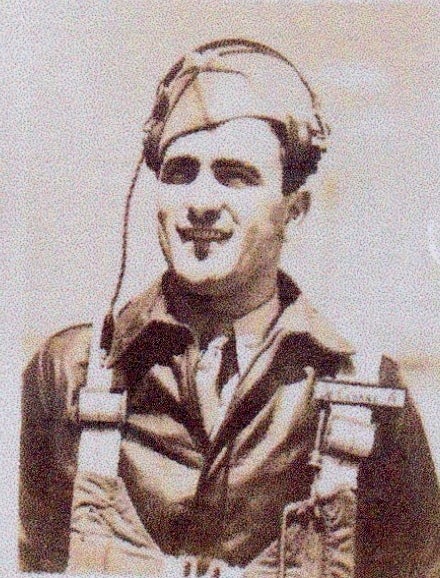- Major
- WW II & Korea
Biography
Anaclethe (Clete) Patrick DeCesare was born in Providence, Rhode Island on 13 January 1918. He was the son of Thomas and Caterina DeCesare. He graduated from Hope High School, Providence, Rhode Island, where he was a three-sport, All-state selection in basketball, baseball and football teams. Upon graduation from high school, he went to prep school at Worcester Academy, Worcester, Massachusetts, where he refined his academic skills and lettered in football, basketball and baseball. His older brother Nick recalls, “Clete showed leadership qualities at a very young age.”
Clete entered Rhode Island State College in September 1937 with the class of 1941. He was a member of Beta Psi Fraternity and president his senior year, the Sachems, Rhode Island Club, Polygon, the Grist Staff, the Football and Basketball Teams and participated in the Army ROTC program for two years. Upon graduating from Rhode Island State College, he enlisted in the U.S. Army Air Forces and graduated from bombardier school as a bombardier/navigator, was commissioned a Second Lieutenant and assigned to the 498th Bomb Group (Heavy), 20th Air Force.
During World War II, the 498th flew out of Saipan. The 498th flew its first combat missions against Iwo Jima and the Truk Islands. On 24 November 1944, the 498th participated in the first assault by B-29’s on Japan. Major DeCesare completed 38 combat missions over Tokyo and other Japanese cities. His greatest exploit of all as a navigator came in 1945 when his superb work on the charts enabled his pilot to guide homeward not only his own plane, but another B-29 Superfortess partially crippled after an attack on an aircraft engine plant at Nagoya, Japan. Major DeCesare dropped flares to mark the course for the crippled plane, and they hit Saipan on the nose.
Major DeCesare went on to fly over sixty-five missions over South Korea and North Korea during the Korean War. He was close to his seventieth combat mission over North Korea when the B-29 he was navigating was shot down over North Korea by enemy fighters. He was categorized as Missing in Action on 12 April 1951, when two empty life rafts were found approximately 15 miles from the nearest land; and only the remains of the tail gunner were recovered.
For his leadership and courage, Major Anaclethe P. DeCesare was awarded the Distinguished Flying Cross with Oak Leaf Cluster, the Air Medal with ten Oak Leaf Clusters and the Purple Heart. Major Anaclethe (Clete) Patrick DeCesare, U.S. Air Force, left his wife, Patricia, and two sons, Anaclethe and Michael.
The following statement was written by Clete’s niece, Ms. Cathryn E. DeCesare: “This marks the end of the journey for Anaclethe DeCesare. His life is a celebration of the admirable qualities of leadership, courage, dedication, determination and great personal sacrifice. Clete is the true definition of a scholar-athlete.”
The name of Major Anaclethe Patrick DeCesare, U.S. Air Force, is on the Tablets of the Missing, Honolulu Memorial, in Hawaii. His family placed a marker at the Rhode Island Veterans Memorial Cemetery in his honor.
Major Anaclethe Patrick DeCesare’s courage and devotion to duty contributed to the success of our forces in defeating the Japanese in World War II and prevented the North Korean forces from occupying South Korea during the Korean War. His actions were in keeping with the highest traditions of the United States Air Force. He was a son of Rhode Island State College who answered the call during two wars, World War II and the Korean War, and gave his life in service to Rhode Island and our country. He is a true member of the “Greatest Generation.”
Education
1941

